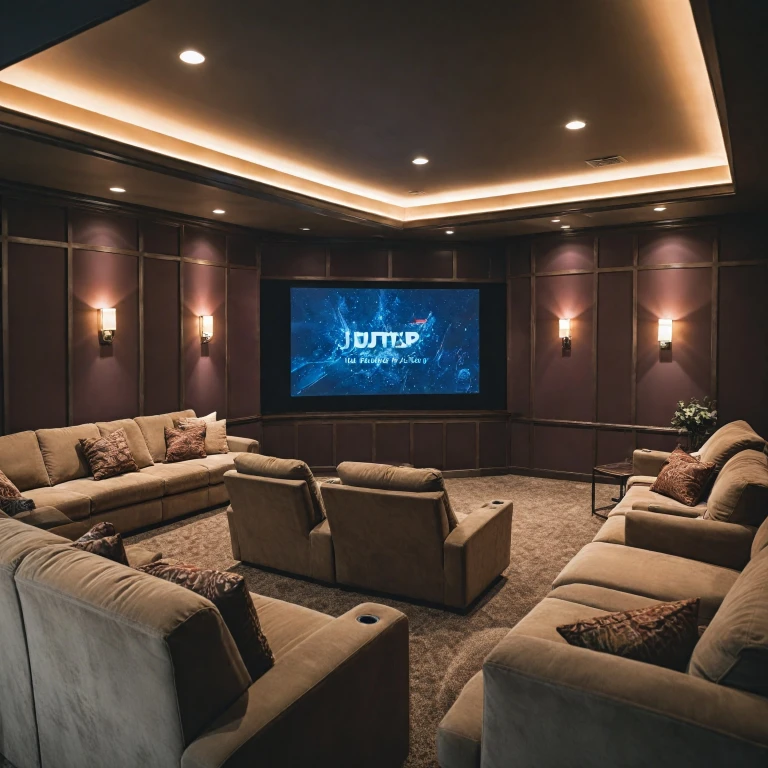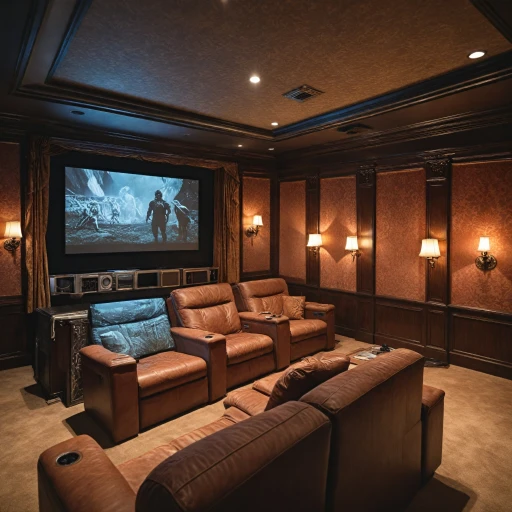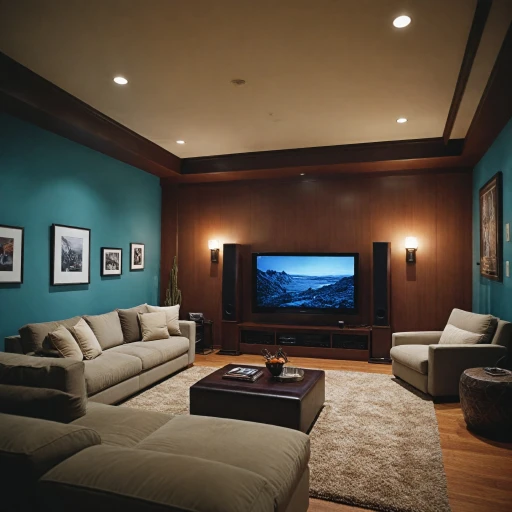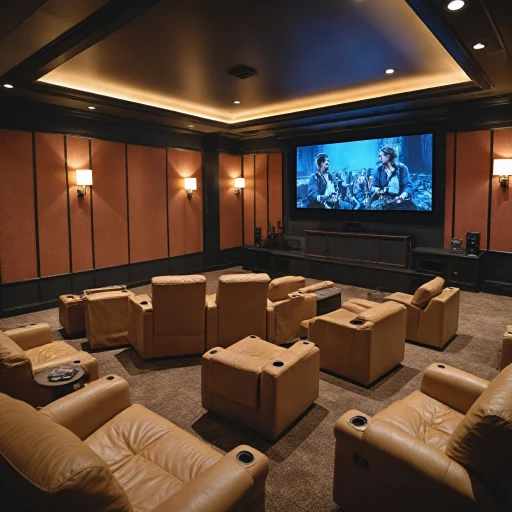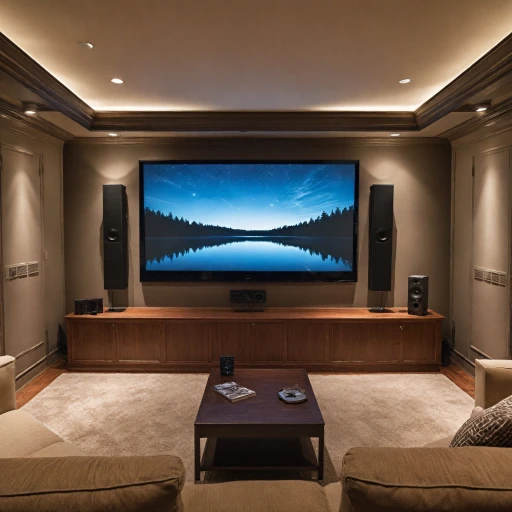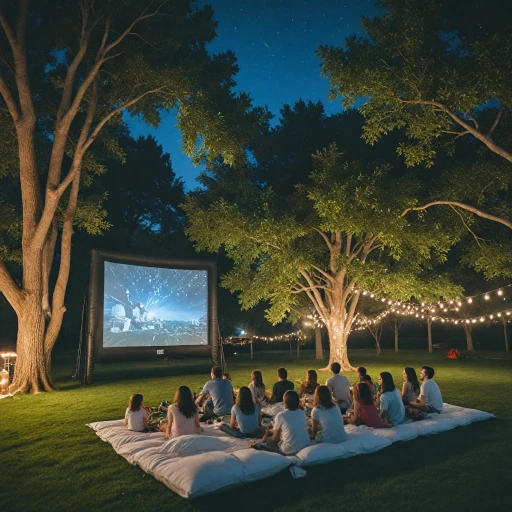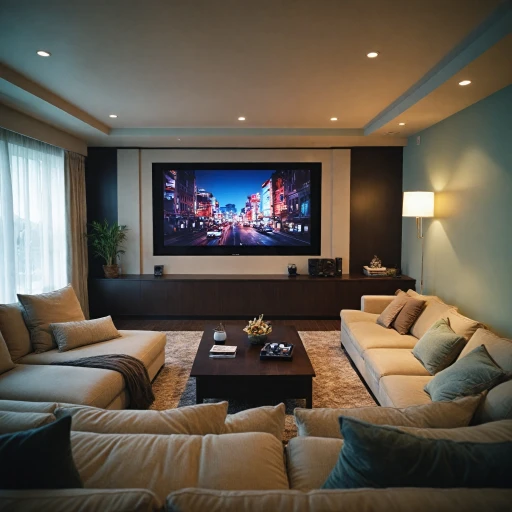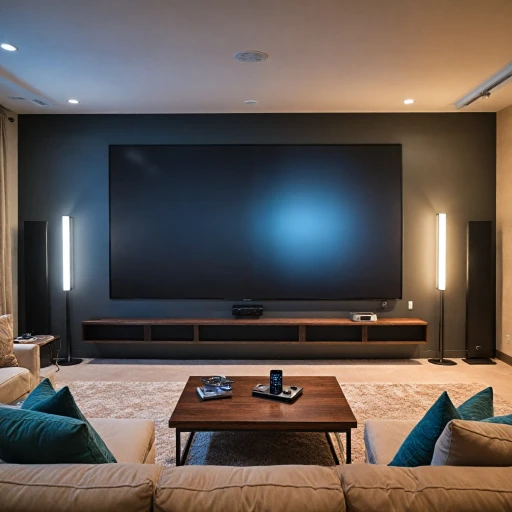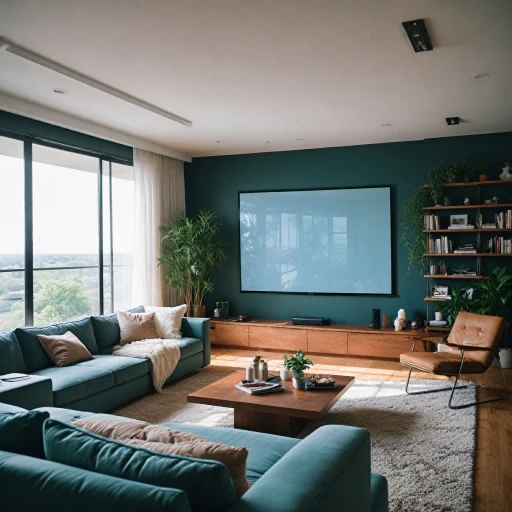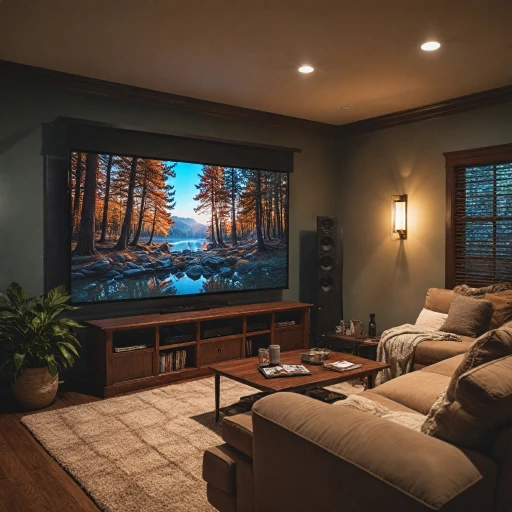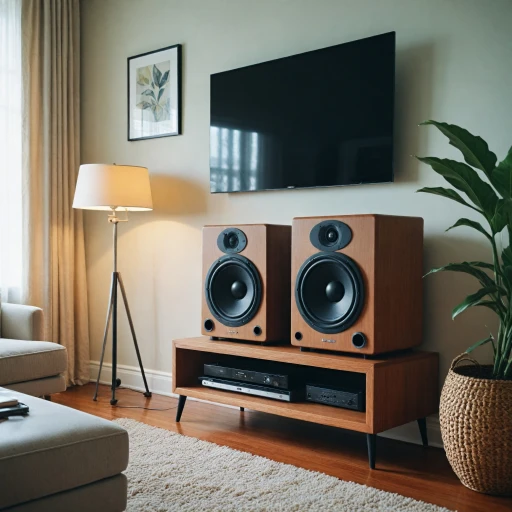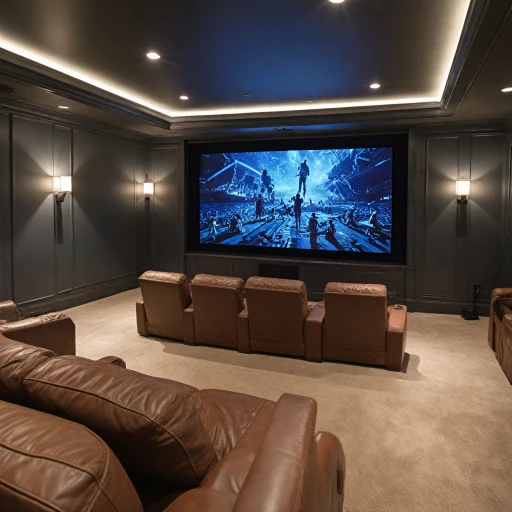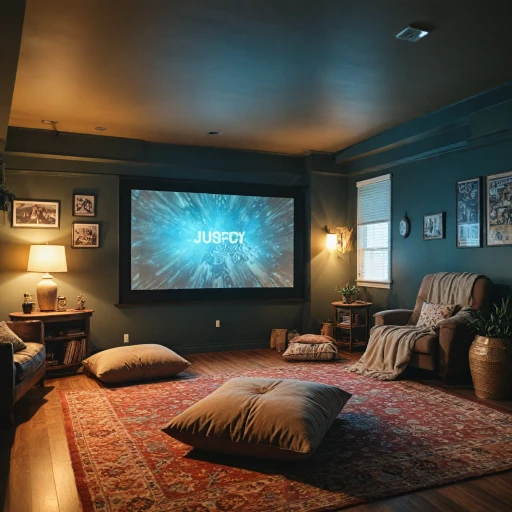
Understanding Ambient Light and Its Impact
Impact of Ambient Light on Home Theater Projection
Creating the perfect home theater involves more than just buying a great projector. One of the critical factors that can impact your movie-watching experience is ambient light. Ambient light refers to any light present in a room that does not come from your projector. These can be streetlights streaming in through windows, overhead lights, or even light reflections from your floors and walls. When ambient light interferes with your projection, the quality of the image on your screen diminishes, reducing contrast and color vibrancy, ultimately affecting the picture quality. It becomes evident, especially if you are using a regular projection screen or a painted wall, that ambient light can wash out the picture, making it appear less vivid. For those who love watching movies during the day or in rooms with unavoidable light exposure, a dedicated solution is crucial. This is where the choice of the projection screen gains significant importance. Certain projector screens are engineered to combat ambient light effectively, providing a clearer, more vibrant image. With numerous options available, picking the right screen involves understanding the space you're working with, the type of projector you have (be it a short throw, an ultra short throw, or a standard projector), and your budget. The investment in the right screen can make a definitive difference in keeping picture quality consistent, much like enhancing your viewing experience. Consider these options and factors to maximize your home theater setup. In subsequent sections, we'll delve deeper into specialized solutions like ambient light rejecting screens and help you choose the best product for your needs. The comparative analysis of different ALR screens can guide you toward a choice that both suits your price range and enhances your video quality substantially.What Are Ambient Light Rejecting Screens?
Unraveling the Mystery of Ambient Light Rejecting Screens
Ambient light, the bane of home theater enthusiasts, often distracts from the immersive experience that a good projector should provide. But fear not—this is where Ambient Light Rejecting (ALR) screens step in. Designed specifically to combat interference from ambient light, these screens work wonders for your viewing experience.
ALR screens achieve their magical effect through unique surface designs that selectively reflect light. Unlike regular screens, they diminish the reflection of ambient light and maximize the projector’s output, ensuring clear and vibrant images even in well-lit rooms. This is especially beneficial for spaces where controlling lighting is a challenge.
When you think about the investment in a quality home theater setup, ALR screens are a compelling choice. Not only do they enhance contrast and color saturation, but they also aid in achieving a perfect balance of light rejection and image brightness.
Whether you're using a short throw or ultra short throw projector, or even a conventional one, ALR screens offer various options—fixed frames, tab tension designs, and even screen paints configured to optimize your space. From brands like Elite Screens to custom options with varying gain levels and sizes, the choices are plentiful.
Understanding your room’s particular challenges and knowing what type of projection screen fits your needs will help ensure the best performance and satisfaction with your home theater system. So, if you're ready to conquer the ambient light menace, ALR screens might just be the perfect item to consider.
Benefits of Using Light-Resistant Screens
Advantages of Light-Resistant Screens
In today's modern home theaters, addressing the challenge posed by ambient light becomes crucial. A key solution lies in the use of light-resistant screens, often referred to as ambient light rejecting (ALR) screens. These projector screens stand out due to their ability to effectively combat the interference caused by light from windows, lamps, and other sources, ensuring a crisp and clear image without strain on your projector. One of the most significant benefits of choosing an ALR screen is its ability to maintain image quality in various lighting conditions, allowing you to enjoy your favorite movies or TV shows during the day or night. Unlike traditional projection screens that require a darkened room, ALR screens reflect only the projector’s light back to the viewer while diverting or absorbing ambient light from other sources. Additionally, ALR screens come in a range of formats and sizes, such as fixed frame options and tab tension screens, making them versatile choices for any home theater setup. The screen paint technology incorporated into some rejecting screen options also enhances their capability to project vivid colors and deep contrasts, which is often seen in top models and brands. Equally important, the variety of gain levels available ensures the optimal performance of both short throw and ultra short throw projectors, allowing viewers a customized experience based on their specific room dynamics and projector type. Investing in a quality ALR screen can also be cost-effective, as it provides a long-lasting product without the need for frequent replacements. This helps maintain the investment value over time, surpassing regular screens that may underperform in non-ideal lighting conditions. When considering the price, keep in mind that although some elite screens may have a higher initial cost, they offer superior performance and durability. Discover why enhancing your home theater with an ambient light rejecting screen can significantly improve your viewing pleasure and ensure an exceptional cinematic experience. For those looking to further elevate their setup, exploring additional components like a subwoofer plate amplifier can also contribute to a richer audio and visual environment."Choosing the Right Screen for Your Space
Steps to Select the Ideal Light-Resistant Screen
When enhancing your home theater with a light-resistant screen, a well-considered selection process ensures you get the perfect screen for your needs. Various factors like the type of ambient light present in the space, your projector model, and budget considerations can significantly influence your purchase decision.- Understand the Lighting Conditions: Consider the amount of ambient light in your room. For brighter spaces, an ambient light rejecting (ALR) screen is advisable as it significantly reduces glare and delivers clear images even in well-lit conditions. Screens designed to absorb or scatter ambient light should be prioritized.
- Projector Compatibility: Align your screen choice with your projector. Short throw and ultra-short throw projectors may require specific ALR screens which are different from those used with standard projectors. Additionally, ensure the screen gain is compatible with your projector’s brightness to balance image clarity and color accuracy.
- Size and Placement: Determine the size based on your room dimensions. Common options include the 120-inch and 150-inch projector screens, but the optimal size depends on viewing distance and room layout. Whether opting for a fixed frame or a retractable model, the goal is to fit seamlessly with your space.
- Budget Considerations: Prices can vary significantly. Evaluate options across various price points. Items like an elite ALR screen might come with a premium price, but often justify the investment with superior performance and durability. Be aware of regular price fluctuations and shop around for the best deals.
- Material and Finish: The finish and material of the screen can impact image quality. From specialized ALR paints to sophisticated fabrics, each has its impact on your viewing experience. The number of choices can be overwhelming, so prioritize features that matter most to your expectations and setup.
Installation Tips for Optimal Performance
Setting Up for Success: Installation Advice
Installing your projector screen correctly is crucial for getting the most out of your ALR (Ambient Light Rejecting) technology. Whether you're using a fixed frame or a tab tension screen, follow these tips to enhance your home theater experience:- Positioning and Placement: Begin by determining the best placement for your projector, whether it’s a short throw or an ultra short throw model. Depending on your projector, screens should be mounted at a suitable height and angle. Measure the room to ensure the screen size matches the projection area—common sizes include a 100-inch projector screen or larger.
- Consider the Environment: It's essential to take into account the ambient light levels in your room. Choose a spot where strong light sources like windows and doors don't directly hit the screen. For rooms with high ambient light, selecting a screen with higher gain can improve image brightness.
- Mounting Options: For those considering elite screens, make use of the mounting hardware that often comes with these products to ensure your screen is securely fastened. The price elite models often include detailed instructions for mounting, so follow these closely.
- Calibrate for Best Results: Once setup is complete, calibrate your projector and screen for optimal performance. Adjust your projector's settings to complement the ALR screen, taking into account factors like contrast and sharpness.
- Regular Maintenance: To maintain the quality of your rejecting screen over time, regularly clean and inspect it. Avoid using harsh chemicals that might damage screen surface. Regular price ALR projector screens should include a maintenance guide.
Comparing Top Brands and Models
Comparative Analysis of Leading Screen Brands
When considering a light-resistant screen for your home theater, the number of options available can be overwhelming. To aid in your decision, here's a comparative analysis of some of the top brands that offer a range of products tailored for varying needs and budgets.Elite Screens
Elite Screens is known for its reasonably priced yet high-quality options. They offer a variety of alr screens, including fixed frame and tab tension varieties. Their products cater to both short throw and ultra short throw projectors. Elite Screens' gain factor, which is a measure of light reflection, ensures a consistent viewing experience. Expect to find prices that range widely, making it accessible for many home theater enthusiasts.Screen Innovations
Screen Innovations has established itself as a premium brand in the market. Their ambient light rejecting screens are crafted for optimal viewing in rooms with significant ambient light. They offer innovative products like the "Black Diamond" series, which is acclaimed for its superior contrast and clarity. Although at a higher price point in USD compared to Elite Screens, the quality justifies the investment for those seeking top-tier projection screens.Stewart Filmscreen
Known for its luxurious and customizable options, Stewart Filmscreen provides screens tailored precisely to the customer's needs. Their rejecting screens show impeccable craftsmanship, suitable for both residential and commercial applications. With solutions supporting a variety of throw projectors, their products often come at a regular price that reflects their industry's leadership.Other Notable Brands
Several other manufacturers offer quality screens, including Da-Lite and Draper. These companies provide budget-friendly options, along with custom solutions for more unique setups. Whether you're considering a fixed frame screen or screen paint for a DIY approach, their product line is worth considering.Key Considerations
- Price vs. Quality: Evaluate your budget but remember that a higher initial investment often translates to better long-term performance.
- Screen Size: Depending on your projector's throw ratio, account for the "inch projector" needs. Understanding "screens inch" specifications is crucial.
- Room Dynamics: Consider ambient factors and how a screen's gain and light rejecting capabilities will impact the viewing experience from different angles.
